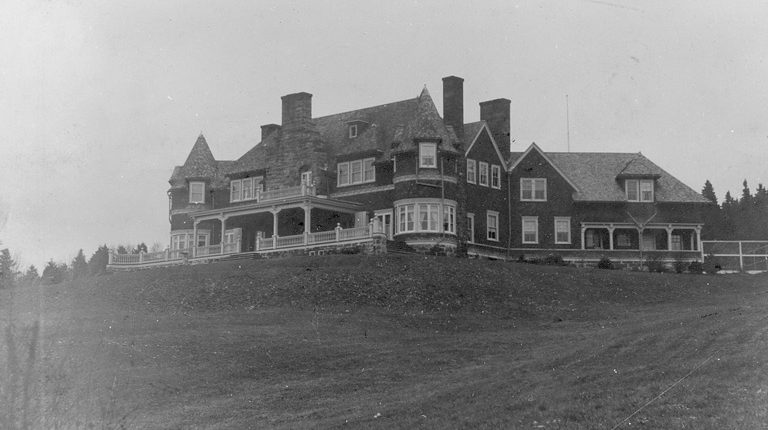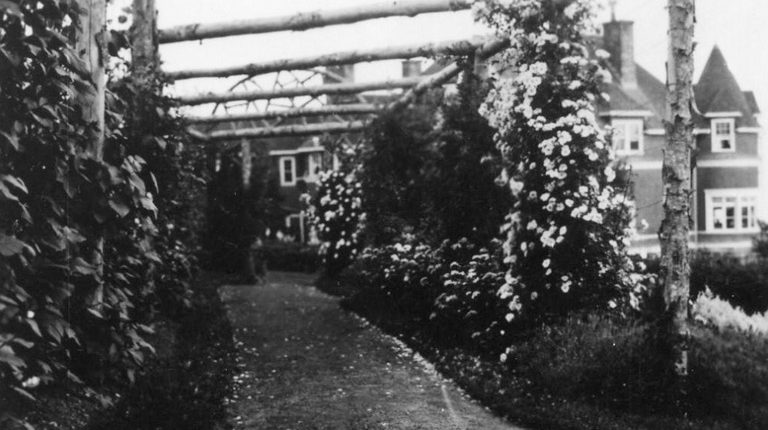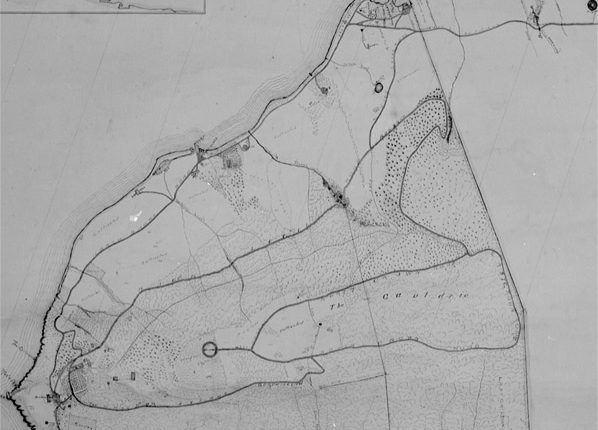It was the belief of the Bell Family that providing “decent places for our work people” was a bigger necessity than building a large house for themselves, which is why there were many houses built prior to Beinn Bhreagh Hall’s construction. In the early 1900s, the Bells were trying to find a way to make the estate more self-sufficient and established departments, each with a department head who would report to an estate manager. These departments included the Laboratory, the Nursery Department, the Farm Department, the Stable Department and the Buildings and Wharves Department and each had their own responsibilities for the estate, be it looking after the upkeep of the roads, selling produce to Beinn Bhreagh Hall and elsewhere, or the many jobs of keeping a large estate in working order.
The land continued to be farmed by employees, with beef and dairy cattle, pigs, chickens, vegetable gardens, fruit trees, and hay crops all being produced. The entire property was the site of various sorts of experiments – be they on land, or water or in the sky. By 1907, the Bells had created, and maintained, twelve miles of roads stretching around, up, and down the mountainside.
Beinn Bhreagh Hall
Beinn Bhreagh Hall is part of Beinn Bhreagh, a patchwork of privately and jointly held lands that have been used and enjoyed by the Bell Family for generations. Beinn Bhreagh Hall, referred to by the family as “The Point,” and its surrounding gardens are located at the point of the Red Head Peninsula with views of the Bras D’Or Lakes in Baddeck, Nova Scotia.
Originally farmland, the 22 acres surrounding Beinn Bhreagh Hall include a landscaped garden rich in botanical history and diversity that flourishes due to a microclimate that creates a fertile environment for exotic trees and fruits. The landscape was planned primarily by Mabel, who learned a love of gardening from her mother and her father, Gardiner Greene Hubbard, the founder and first president of the National Geographic Society.
Completed in 1893, the building is an iconic Shingle Style building and in an iconic Northeastern US style, and perhaps the only building of its kind in Canada.
A Nova Scotia firm, the Rhodes Curry Company based in Amherst, constructed the building between 1891 and 1893, using all local materials at a cost of $22,000. The house contains 37 rooms, 17 fireplaces and 11 bedrooms. Alexander and Mabel Bell and their daughters Elsie and Daisy spent most of their years here between 1893 and 1923. The house retains its heritage value from the period of Alexander Graham Bell and Mabel Hubbard Bell’s residency.
“He is quite a different person here from what he is in Washington. Here he is the life and soul of the party. Nothing is done without him, no detail relating to our enjoyment, comfort or safety escapes him. He is forever on the go………” — In a letter from Mabel Bell
The historic value of Beinn Bhreagh Hall and surrounding property is embodied in the physical value of the house, landscape, landscape features, vistas and associated structures. It was also a hub for scientific discourse, with iImportant people from science and government coming as guests of the family. While there, they engaged in lively and thoughtful discussions. Just as salon-type gatherings in city centres focused a spotlight on the notable persons who hosted them, the unsual and delightful setting of the Cape Breton estate of the Bells also became known in the era as a centre of importance. (B.White, 2017)








